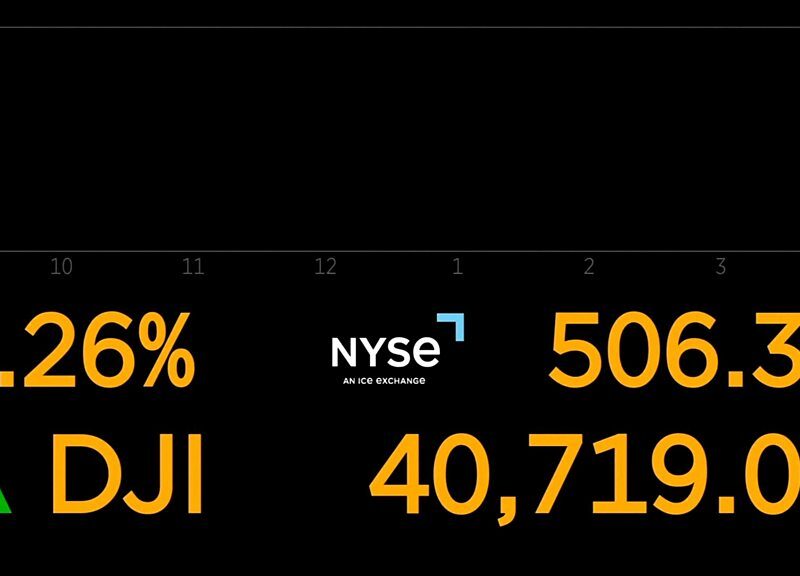US stock markets rose on Monday after the White House announced that tariffs on Chinese-made smartphones and other electronic devices would be lifted.
The rollback, which was announced early Saturday, may be temporary, as President Donald Trump indicated that these products would simply be reassigned to a different tariff category.
In Europe, the UK’s FTSE 100 closed up by 2.1%, while major stock indexes in France and Germany also saw gains.
Despite the partial rebound, global stock markets remain lower than before Trump’s “Liberation Day” tariff announcement on April 2. Following that, US and European markets experienced historic drops followed by record gains after Trump suspended many tariffs for 90 days.
Under Trump’s new trade policy, most Chinese imports to the US had faced a 145% tariff, while Beijing retaliated with its own 125% tariffs on American goods.
The Trump administration is expected to announce tariffs on semiconductors on Monday, and exempted products like smartphones, computers, and other electronics will likely be included in this new category.
The technology-heavy Nasdaq index rose by 0.78% on Monday, while the S&P 500 increased by 0.79% and the Dow Jones Industrial Average gained 0.64%.
Apple, which manufactures most of its iPhones in China for the US market, saw its stock price rise by 5% in early trading before settling at a 2.2% increase. Chip maker ASML and tech company Dell also saw gains.
“Investors were so relieved to hear some positive tariff news that they weren’t overly worried about potential complications down the road,” said Danni Hewson, AJ Bell’s head of financial analysis.

Monday’s gains have not been enough to offset the losses since tariffs were first introduced.
The S&P 500 index is down 4.3% over the past month, while the FTSE 100 has fallen 5.8%, the German Dax is down 8.8%, and the French CAC 40 has dropped 9.4%.
“It seems the tech exemption brought some relief, but these rebounds could be short-lived,” said Sree Kochugovindan, a senior economist at Aberdeen Group, in an interview with the BBC.
“There’s still a risk of more volatility given the uncertainty surrounding the 90-day tariff pause,” she added.
At the same time, the US dollar continued to decline on Monday, falling 0.8% against the British pound and dropping 2.8% since Thursday.
Susannah Streeter, head of money and markets at Hargreaves Lansdown, explained that the dollar’s weakness reflects “the expected damage to the US economy.”
She noted that while the dollar is usually considered a safe haven for investors, “Trump has damaged the US’s reputation on the global stage.”
The bond market appeared stable on Monday, with a key interest rate on US government debt down to 4.4%, though still higher than before April 2.
The rate had surged last Wednesday as investors feared a potential recession and sold US government bonds, which are typically viewed as a safe investment.
Trump and his supporters argue that this volatility is part of a “transition” towards US companies doing more business domestically and employing more American workers.
However, many economists and businesses contend that relocating manufacturing to the US could take decades, and the uncertainty surrounding tariffs is weakening the US economy in the meantime.











